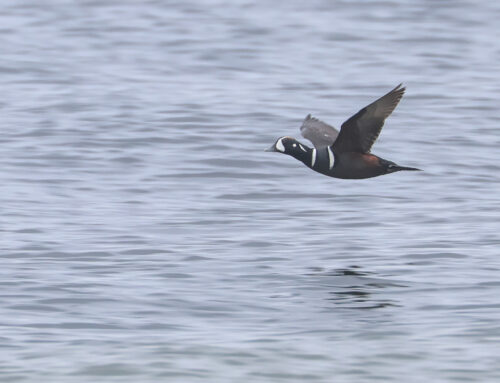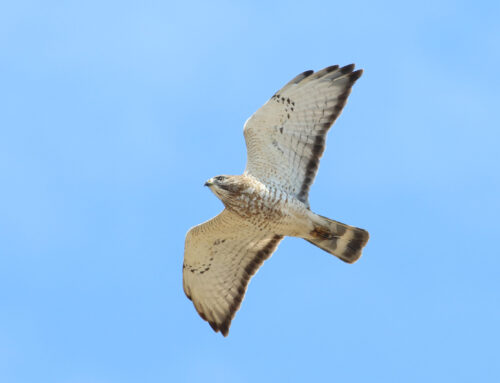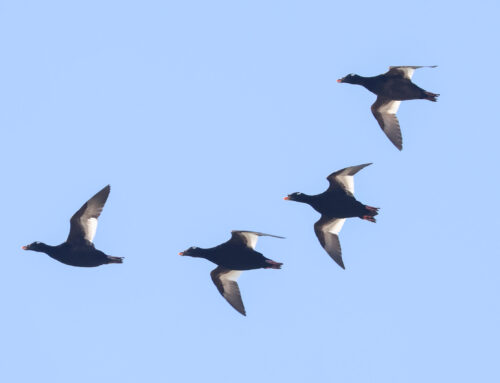The last day of May signals the last day of the spring waterbird migration count. It’s a bit of a bittersweet time; as the season goes, it seems like it has flown by here at Whitefish Point. On the other hand, it can feel like my six weeks here have lasted a lifetime, the days and weeks melding together. The memories of watching the ebb and flow of spring migration here at Whitefish Point will undoubtedly last me a lifetime. This is a special place.
This season seemed to be marked by relentless north to northwest winds for the majority of the count. Despite this, early in the count (mid-April), there were nice dabbler movements, including Northern Pintails, American Wigeons, Mallards, and American Black Ducks. The pintails are one of the most aesthetically pleasing waterbirds to see flying — their long, lean, and sleek appearance reminiscent of a racing greyhound.
Most anticipated, and what generally comprises the bulk of spring migration here at Whitefish Point, is the loon migration, of which I observed thousands. It is always spectacular to watch loons migrating over; with the power and directness they fly, wind direction isn’t really a factor. On warm days loons will fly with their bills open (as seen in the picture) and feet spread open. They pant and pump warm blood through their feet to cool off as they’re flying because they generate so much excess body heat. (I wouldn’t have minded having some of this extra body heat on the colder days.) After loon migration, the spring waterbird count begins to trail off steadily and day by day there are fewer birds.
The last ducks are the scoters, with some stragglers of various species. The last thing to look forward to is the late-May push of shorebirds, and although there was a brief burst of diversity (including being treated to the first point record of a Ruff!), the anticipated big flight of Whimbrel never materialized. With the odd weather pattern and seemly inconsistent ebb and flow of spring migration this season, it really makes one wonder, where did all the birds go? It wasn’t an overwhelming or frantic migration by any means and had more of a thin, gaunt, confused, and undecided feel to it.
Thank you for reading and following along with me this season. And happy birding!
~ Matthew Winkler
2021 WPBO Waterbird Counter
Photo: Common Loon
You can see results for the 2021 Waterbird Count on Dunkadoo, read Matthew’s weekly blog post, and follow WPBO’s social media (Facebook, Instagram, and Twitter) for waterbird count highlights from the season.
If you visit WPBO, please practice social distancing while doing so. Although not required, we encourage you to wear masks if you are in close proximity to other people, even if outdoors.

Celebrating Spring Migration at Whitefish Point — A Webinar Series
Demystifying Great Lakes Waterbirds
May 20 | 7 p.m.
Having trouble distinguishing what dabbling duck you are observing? Or maybe you aren’t sure how to tell the difference between a Long-tailed Duck and a Red-necked Grebe from afar. Join us for Waterbird Counter Matthew Winkler’s presentation breaking down his methods used to unravel waterbird identifications. For many of us, identifying ducks, loons, and grebes in flight comes with a high intimidation factor; these waterbirds travel quickly, and some are only subtly different. Matthew will help break down these barriers and help you better enjoy lakewatching and all of the exciting birding it offers! Matthew is excited to share his experience with you and answer questions regarding waterbird ID and the waterbird count at Whitefish Point Bird Observatory.
This event is the third in a four-part series of free webinars celebrating spring migration at the Point and highlighting WPBO research programs.






